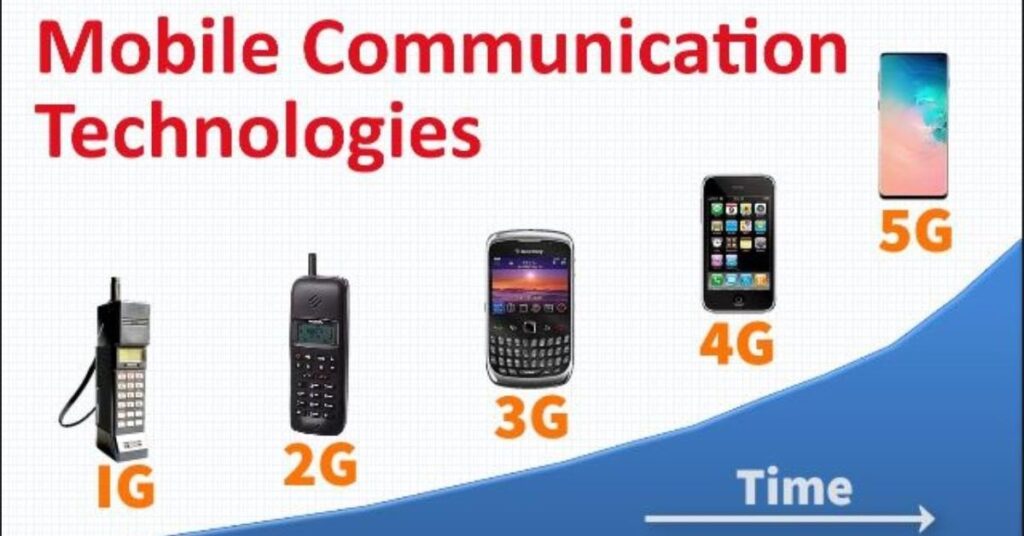In today’s fast-changing digital age, mobile technologies have become the backbone of modern communication and productivity in the United States. From smartphones to smartwatches and IoT-powered devices, mobile technology keeps Americans connected across cities, states, and industries. It has changed how people work, learn, shop, and interact. Mobile technology means more than just making calls or sending texts; it represents a complete ecosystem that connects people, devices, and data instantly. Over the last few decades, it has evolved from simple voice communication to high-speed data transfer, AI-driven apps, and cloud connectivity that drives the nation’s economy.
In simple terms, mobile technology refers to all the portable digital devices and systems that allow wireless communication between people and machines. These include cell phones, tablets, wearables, GPS systems, and mobile networks like 4G and 5G. As the U.S. embraces advanced connectivity, mobile technologies continue to power businesses, healthcare systems, transportation networks, and education platforms. Understanding Mobile Technologies – Definition Types Uses Advantages helps individuals and companies unlock innovation and efficiency in almost every part of daily life.
Types of Mobile Technologies
There are several types of mobile technologies that shape our digital lifestyle. The first and most important is wireless communication technology, which includes GSM, LTE, 4G, and 5G networks. These allow users to access the internet, make video calls, and stream content with incredible speed. The United States has led the 5G revolution, enabling smart cities, autonomous cars, and instant data exchange. In fact, 5G’s average speed in the U.S. is now 10 times faster than 4G, paving the way for innovations like telemedicine and augmented reality applications.
Another key type of mobile technology lies in mobile operating systems such as Android, iOS, and HarmonyOS. These systems provide a user-friendly interface for running applications and managing hardware functions. Android dominates globally, while iOS remains the favorite among American users for its security and seamless performance. Mobile applications, from social media and online banking to e-commerce and fitness tracking, form the third pillar of mobile technology. These apps have become essential tools for communication, education, business, and entertainment. Wearable technologies like Apple Watch or Fitbit have added a new dimension, offering health monitoring, navigation, and voice command features on the go.
| Type of Mobile Technology | Primary Use in the U.S. |
| 5G Networks | Fast internet, IoT, smart cities |
| Mobile Operating Systems | App management, user experience |
| Mobile Apps | Communication, shopping, banking |
| Wearable Devices | Health tracking, lifestyle |
| IoT Devices | Smart homes, automation |
In addition to these, the Internet of Things (IoT) connects home appliances, vehicles, and industrial systems through mobile networks. Americans now use IoT-powered thermostats, security cameras, and even refrigerators that send alerts to smartphones. Emerging technologies like mobile cloud computing and blockchain are also transforming data storage and transaction security. Together, these technologies form the foundation of the connected American lifestyle.
Use of Mobile Technology
The use of mobile technology extends far beyond communication. In the U.S., smartphones have replaced many traditional tools — they serve as wallets, cameras, GPS navigators, and even remote workstations. Social media platforms like Facebook, TikTok, and Instagram dominate how people interact and share information. Messaging services such as iMessage, WhatsApp, and Telegram have become essential for instant, secure conversations. Beyond socializing, mobile technology is now deeply integrated into education. Students access digital textbooks, attend live classes on Zoom, and use educational apps like Coursera and Khan Academy to learn anywhere.
In the healthcare sector, mobile technologies have made life-saving changes. Doctors use mobile apps to monitor patient health, manage prescriptions, and schedule telehealth sessions. Mobile health (mHealth) platforms allow Americans to track heart rates, sleep cycles, and daily exercise routines. Businesses have also embraced mobile technology for digital payments and e-commerce. Platforms like PayPal, Venmo, Apple Pay, and Google Wallet make transactions faster and safer. The transportation industry has seen equal benefits with ride-hailing apps like Uber and Lyft, GPS-based logistics systems, and vehicle tracking through IoT devices. The entertainment industry thrives on mobile streaming — Netflix, Spotify, and YouTube keep users engaged anytime, anywhere. A report by Statista showed that an average American spends over 4.5 hours daily on mobile apps, highlighting just how deeply these technologies are woven into everyday routines. This widespread adoption reflects how Mobile Technologies – Definition Types Uses Advantages influence nearly every aspect of American life, from communication to commerce and entertainment.
Advantages of Mobile Technology
The advantages of mobile technology are enormous. One of the biggest benefits is connectivity — it brings people and businesses together, no matter the distance. In a fast-paced country like the U.S., mobile technologies ensure that workers, students, and families can stay in touch anytime. Another major advantage is productivity. Mobile tools such as Slack, Trello, and Microsoft Teams have made remote work more efficient, allowing teams to collaborate seamlessly. In the economic sphere, mobile technology fuels digital commerce, supports small businesses, and drives innovation in the startup ecosystem.
Healthcare has also improved with mobile technologies that promote wellness and preventive care. Apps that monitor heart rate, nutrition, and stress levels contribute to healthier lifestyles. Additionally, the use of mobile technology supports environmental awareness by reducing paper waste through e-billing, online transactions, and mobile documentation. The impact of mobile technology in education, healthcare, and e-commerce has led to increased convenience and accessibility for all age groups in the U.S. Its influence on daily life is undeniable — from emergency alerts during disasters to quick access to financial services.
| Advantages of Mobile Technology | Personal Benefits | Business Benefits |
| Connectivity | Constant communication | Global business reach |
| Productivity | Task management | Remote collaboration |
| Innovation | Access to smart tools | Tech-driven growth |
| Accessibility | Inclusive learning, health apps | Wider customer base |
Disadvantages of Mobile Technology
While Mobile Technologies – Definition Types Uses Advantages highlight incredible progress in the modern world, it’s equally important to understand their limitations. Despite its benefits, there are some disadvantages of mobile technology that users must be aware of. Privacy remains one of the top concerns in the U.S. As people rely more on apps for personal and financial data, the risk of cyberattacks and data breaches grows. Overuse of smartphones can also cause mental and physical issues like stress, insomnia, and reduced attention span. Many Americans report spending too much time on social media, which can lead to digital fatigue. The constant need to upgrade devices adds financial pressure and contributes to electronic waste. Environmental challenges such as discarded batteries and short device lifespans further complicate the issue. Another problem is network dependence. When connectivity fails, daily operations — from online banking to navigation — come to a sudden halt. Businesses relying solely on mobile systems face downtime that can cost millions. These challenges highlight the need for digital balance, security awareness, and responsible technology use in modern life.
How to Overcome the Drawbacks of Mobile Technology
Overcoming these drawbacks requires practical steps. Using data encryption, installing reliable antivirus software, and updating devices regularly can prevent cyber threats. Americans are also turning to digital wellness apps that help monitor screen time and promote healthier online habits. Recycling programs and government policies are working toward reducing e-waste. By maintaining mindful usage and adopting sustainable practices, users can continue enjoying the benefits of mobile technologies without facing their downsides. As one tech expert famously said, “Technology is best when it brings people together — not when it controls them.” That idea perfectly sums up the goal of responsible mobile usage in the U.S.
May Also Read: A Complete Guide to Mobile App Development
Conclusion
In conclusion, Mobile Technologies – Definition Types Uses Advantages reflect how innovation shapes the American lifestyle, economy, and communication. From improving business productivity to transforming healthcare, education, and entertainment, mobile technology continues to empower millions. Yet, as powerful as it is, responsible use is the key to long-term sustainability. Embracing technology mindfully ensures that its advantages outweigh its disadvantages. With the arrival of 6G, artificial intelligence, and advanced IoT systems, the future of mobile technology in the U.S. promises to be faster, smarter, and more connected than ever. The journey of mobile innovation is far from over — it’s only getting started.

Jake Miller is a mobile troubleshooting specialist with 7+ years of experience solving Android and app-related issues. He tests every fix on real devices to ensure accuracy and reliability. Jake creates simple, step-by-step guides to help users quickly resolve everyday smartphone problems.



